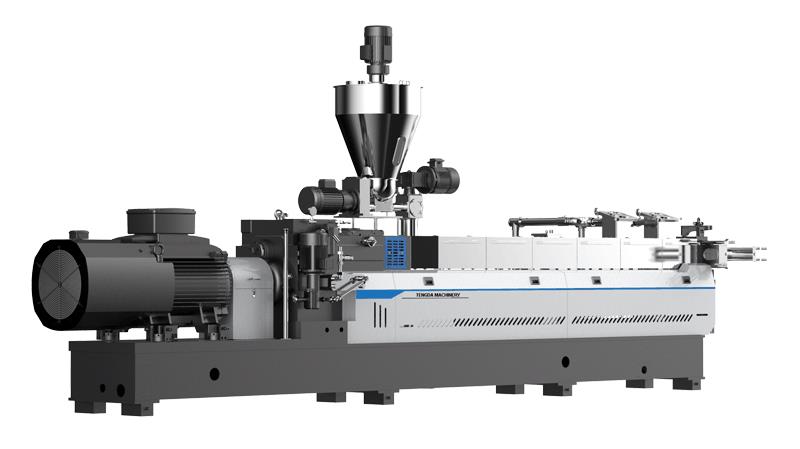Plastic extrusion lines have become a staple in many manufacturing operations. They are used to produce a wide range of products, from plastic bags and packaging to automotive components and even medical devices.
While these systems are incredibly efficient, they can also be prone to problems that can cause costly downtime, delays, and other issues.
In this blog post, we will discuss the most common issues encountered in plastic extrusion lines and how you can address them quickly and effectively. We’ll look at ways to prevent breakdowns before they occur as well as strategies for dealing with them when they do happen.
By taking proactive steps now, you can reduce the risk of major disruptions down the line.
Despite their efficiency, plastic extrusion lines can experience a range of issues that can lead to downtime, delays, and other problems. Here are some of the most common problems encountered with plastic extrusion lines:
Over time, melt filters in an extruder line can become clogged with debris from recycled materials or hard particles picked up in the feedstock supply chain.
If not addressed quickly, this can lead to serious flow restrictions, which will reduce output quality and cause production disruptions.
With constant use, parts in an extruder line can wear out over time leading to decreased performance or even complete failure of certain components such as heaters or gearboxes. Regular maintenance is essential for keeping these machines running smoothly and avoiding unexpected breakdowns.
Misalignment of dies can cause uneven product thickness along with other issues such as defects or voids in the finished product. Properly aligning dies requires close attention to detail and periodic adjustment according to the manufacturer’s specifications.
Poor quality feedstock supply chain materials such as contaminated raw materials or degraded stock will lead to inconsistent product output quality as well as process errors due to uneven heating or poor mixing abilities within the system itself.
Adherence to strict guidelines when it comes to selecting proper plastics is key for producing consistent results with minimal disruption over time.
Improper connections between motors and drives, too little power being supplied, or faulty wiring can all create electrical system issues that could potentially affect the integrity of the machine’s components causing unexpected downtime while they get repaired or replaced completely if necessary.
|
| Tengda plastic extruder line |
In order to prevent breakdowns before they occur in plastic extrusion lines, the following steps should be taken:
Regular maintenance checks of all components and parts of the machine are important for ensuring that everything is in working order. This includes checking for signs of wear and tear, misalignment of dies, clogged filters, as well as electrical issues. It is also important to follow all safety procedures when conducting these inspections.
Implementing strict quality control measures throughout the production process can help avoid major disruptions down the line due to poor material quality or other problems with inputs.
This may include testing raw materials for contaminants or making sure that any recycled stock has been properly processed and cleaned prior to use.
Analyzing each step of the production process can help identify areas where improvements can be made in order to optimize output quality and reduce downtime due to breakdowns. This could involve fine-tuning temperature settings, adjusting speeds, or changing die sizes according to product specifications.
Systems such as condition monitoring can be used to detect potential issues before they become serious problems by using sensors that monitor key parameters such as pressure, temperature, vibration levels, etc.
Automating certain processes within the line can also minimize human error while increasing the overall efficiency and accuracy of production runs.

When breakdowns do occur in a plastic extrusion line, it is important to have a plan of action in place to minimize downtime and disruption. Depending on the issue at hand, there are several strategies that can be employed, such as:
Running diagnostics and troubleshooting any electrical or mechanical components that may be failing or malfunctioning is essential for getting the line back up and running quickly. This can involve replacing broken parts, readjusting settings, or making other minor repairs.
Isolating and containing any faulty equipment or material that has been identified as the cause of the disruption can help prevent further damage from occurring as well as ensuring any issues don’t spread throughout the system.
Identifying the root cause of breakdowns is essential in order to develop long-term solutions and minimize future disruptions. This could involve conducting a thorough investigation into why certain components failed or why specific materials were not able to withstand certain temperatures or pressures within the extrusion process itself.
By taking proactive measures, such as regular maintenance checks, strict quality control measures, process optimization, and automation & monitoring systems when dealing with disruptions in plastic extrusion lines, it is possible to minimize the risk of unexpected downtime.
Implementing root cause analysis for any breakdowns that do occur will also help identify long-term solutions and ensure production lines stay up and running with minimal disruption while improving overall efficiency over time.
With the right strategies in place, you can rest assured knowing your system has been designed to keep working efficiently without interruption.